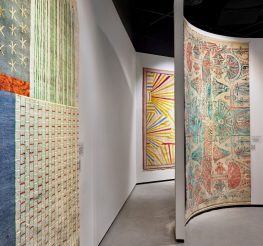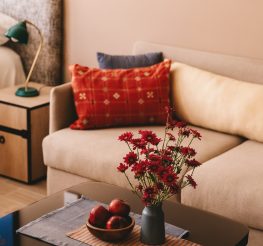Gayer Anderson Museum: One of Cairo’s Most Unique Historical Landmarks

Katie Dryden
Nothing is as alluring as a house with a story; something that is perfectly demonstrated with the Gayer Anderson Museum, which boasts an astonishing history, precious antiquities and valuable heritage, that are both exquisite and well-preserved.
Located in Ahmed Ibn Tulun Street in the Sayida Zainab district, the Gayer Anderson mansion – later turned into a museum – was owned by Gayer Anderson Pasha, a British art collector who fell in love with Egypt’s history and culture.
Perhaps best known for being an Orientalist who preserved history in one of Cairo’s most beautiful buildings, Anderson (1881-1945) was a British officer who had an eventful life, to say the least. In 1904, Anderson worked with the Royal Army Medical Corps, providing medical care for British army personnel, before being transferred to the Egyptian army in 1907, then later operating as an inspector in the Egyptian Ministry of Interior.
After his retirement, Anderson developed an interest in Egyptology and Oriental Studies. His journey through life and his passions are demonstrated inside the walls of the mansion where Anderson resided between 1935 and 1942.
The museum, which is adjacent to Ahmed Ibn Tulun Mosque, consists of two remarkable buildings; the larger one was built in 1632 and the smaller one in 1540.
The house holds 29 halls, decorated with Oriental architecture and designs in which artifacts are placed in a glass display to preserve them. Inside the Egyptian room, artifacts including iron pistols, daggers and swords, as well as Pharonic artifacts including a black and gold mummy case, a cast of Nefertiti’s head and an ostrich egg engraved with a map of Egypt.
One room which documents the era in which the house was built is the child birth room, with hard wooden chairs with a simple hole carved in the seat was prepared for the baby’s delivery is.
Each room at the Gayer Anderson Museum has several lamps powered by olive oil, as well as a special granite cabinet to keep the food cool. In addition to a glorious view, the terrace contains several stone sinks and large ceramic containers used to store seeds and other dry foods.
The museum still has remnants of the separate living quarters between men and woman; open, public and spacious areas were afforded for men, whereas living rooms designed for women encouraged a rather secluded atmosphere equipped with few examples of mashrabia – Oriental windows with wooden carvings. Women’s living rooms are rich in decoration; every piece of furniture from the cabinets to the chairs are filled with intricate patterns and designs dating back to the Islamic period and some of the styles are also derived from Iran, India, China and Syria.
The ‘secret room’ was one of the most interesting to observe. The room was used as a perfect hiding place – its door looking like a storage cupboard – used to hide outlaws or merely for women to peek at house parties.
Anderson’s personal room was equally fascinating, boasting an old-fashioned Persian bed and a smaller one beside it where it is said his housekeeper would sleep.
One important thing to remember when visiting this museum is to never forget to look at the ceilings which are decorated with intricate Syrian designs. Perhaps the most beautiful aspect of the Grayer Anderson Museum story is that when Anderson was ill and had to move back home in 1942, he gifted his mansion with all its belongings to the Egyptian government, which, in return, granted him with the title Pasha. One room in the house shows the original certificate from King Farouk.
Gayer Anderson museum was home for several film sets, including James Bond’s The Spy Who Loved Me and visiting this museum is like being transported back in time to an almost kitschy, unreal and sometimes even surreal space.
recommended
 Shopping
Shopping
Black Friday 2025: Where to Find Discounts & Offers in Egypt
Affordable shopping black friday +3 Arts & Culture
Arts & Culture
Cairo Design Week 2025: A Celebration of Creativity Across the City
Art Galleries in Zamalek arts and crafts +3 Restaurants
Restaurants


